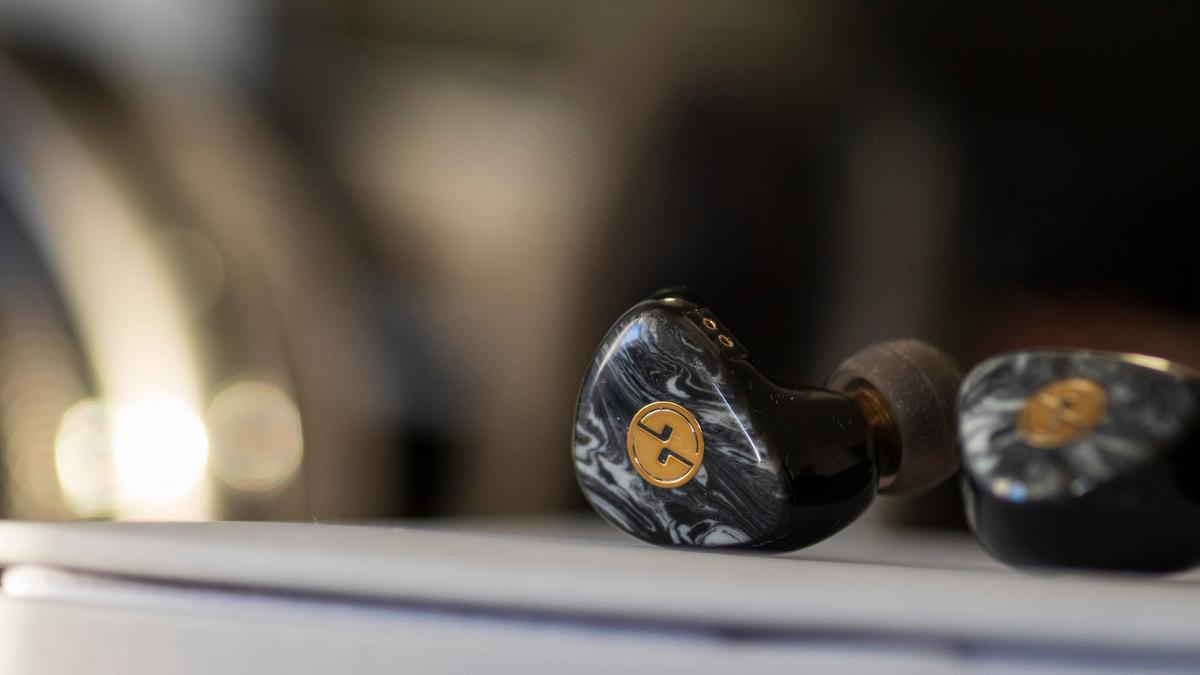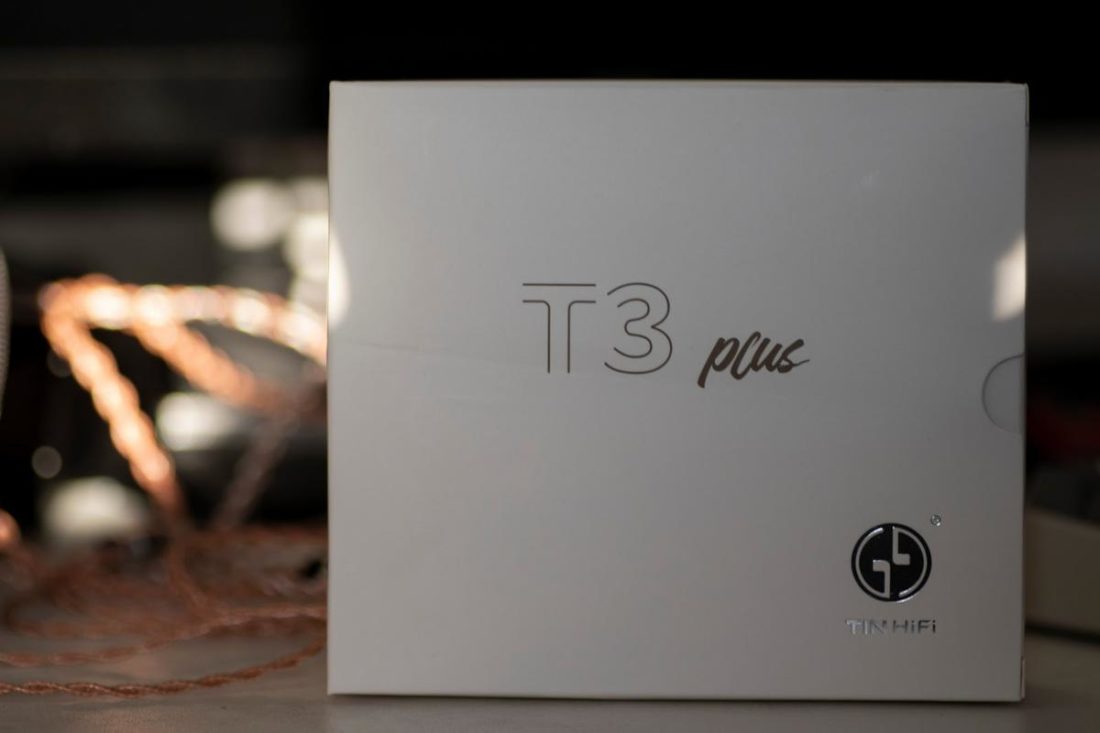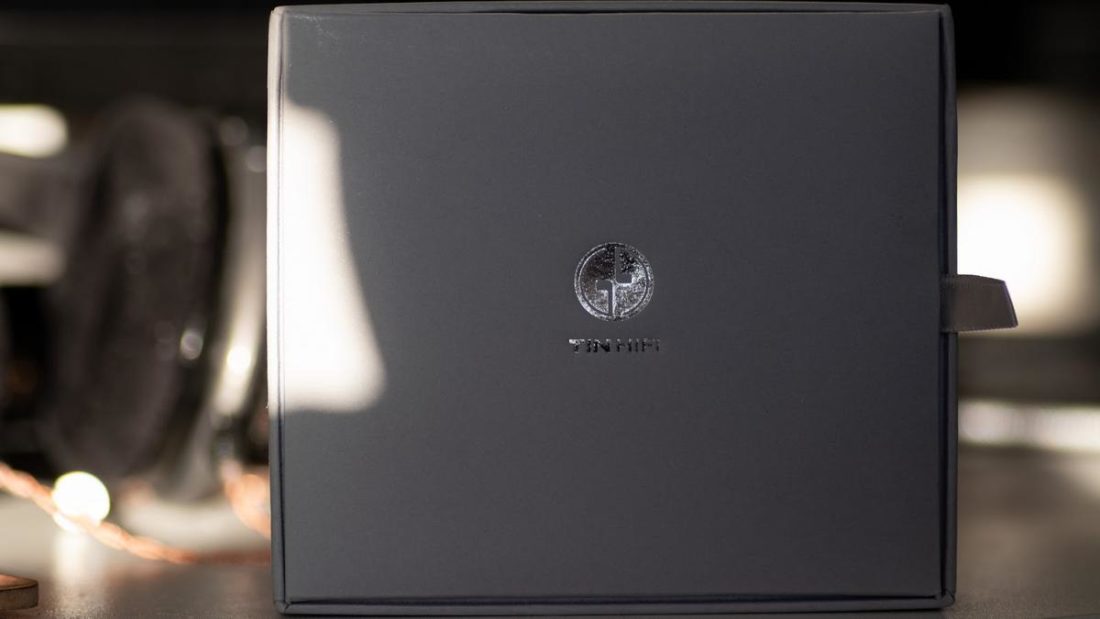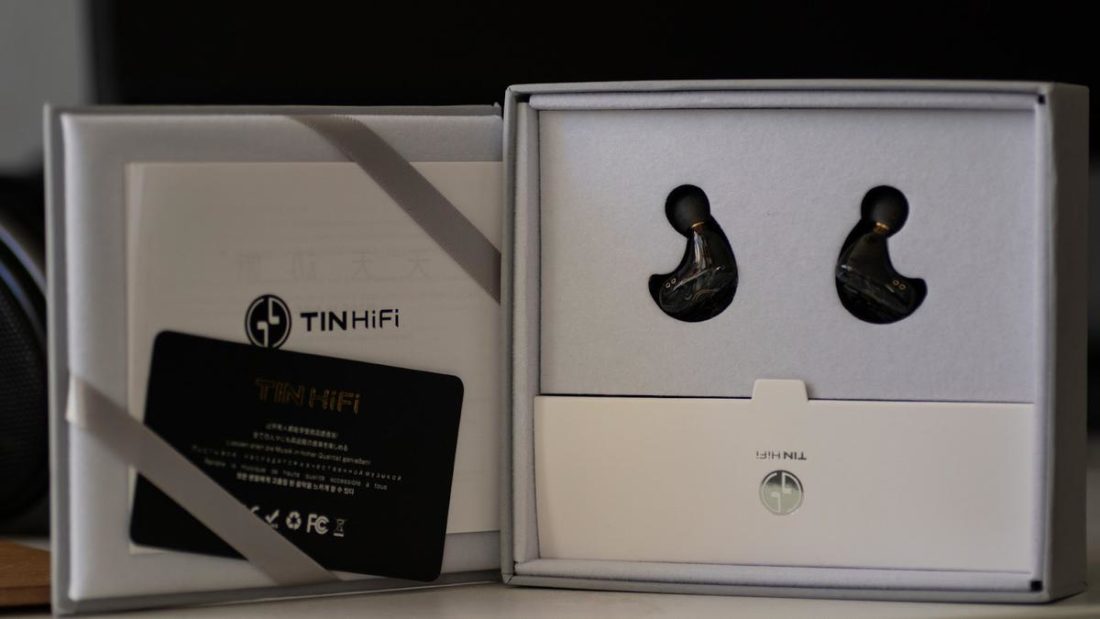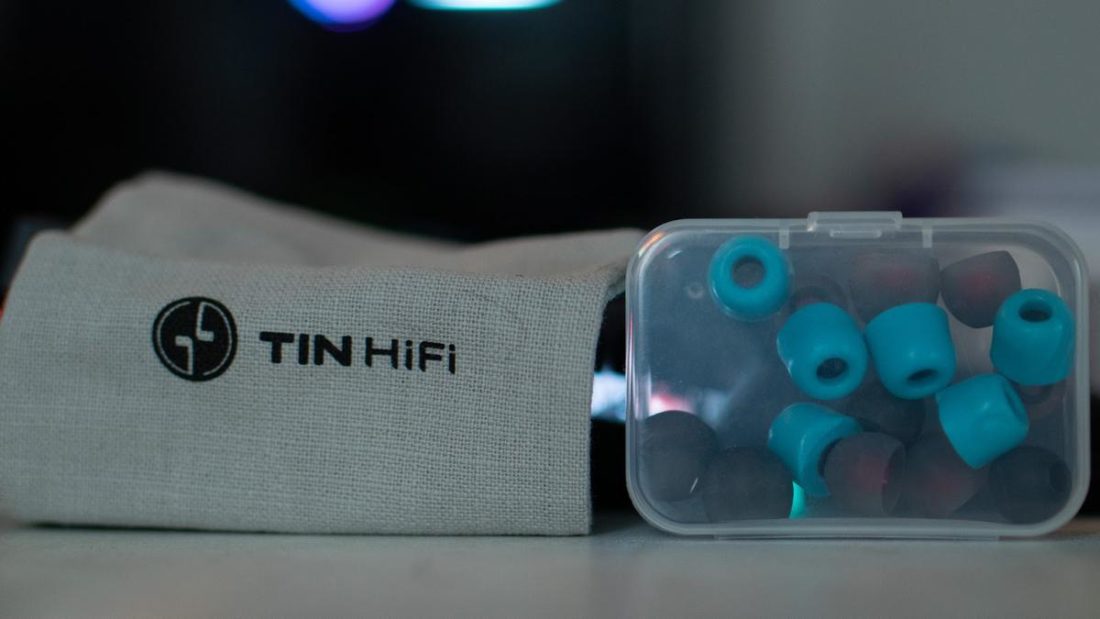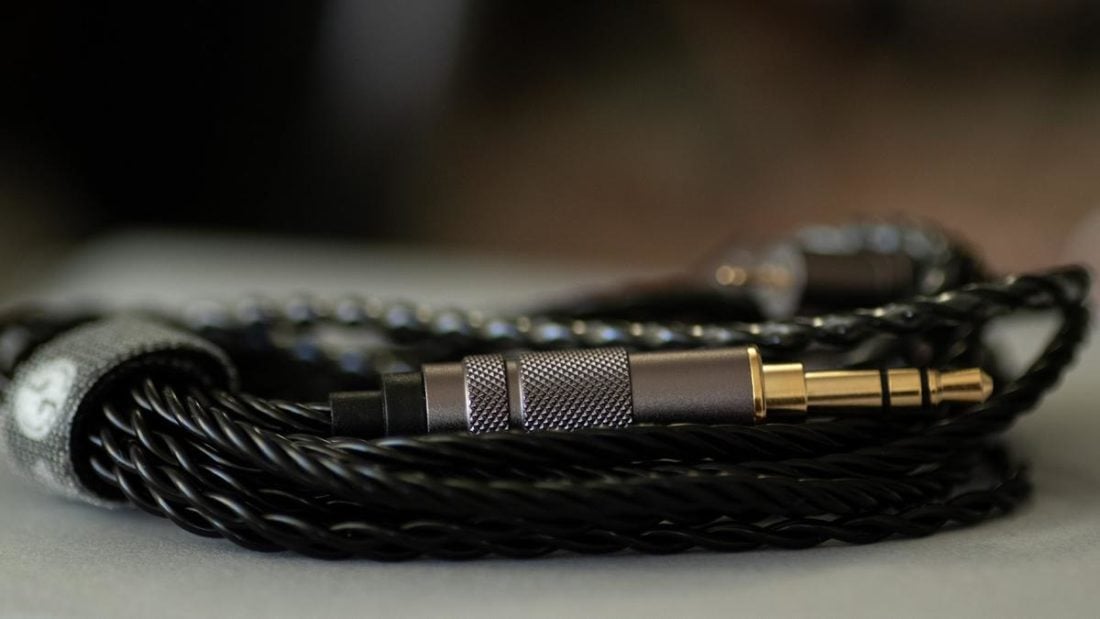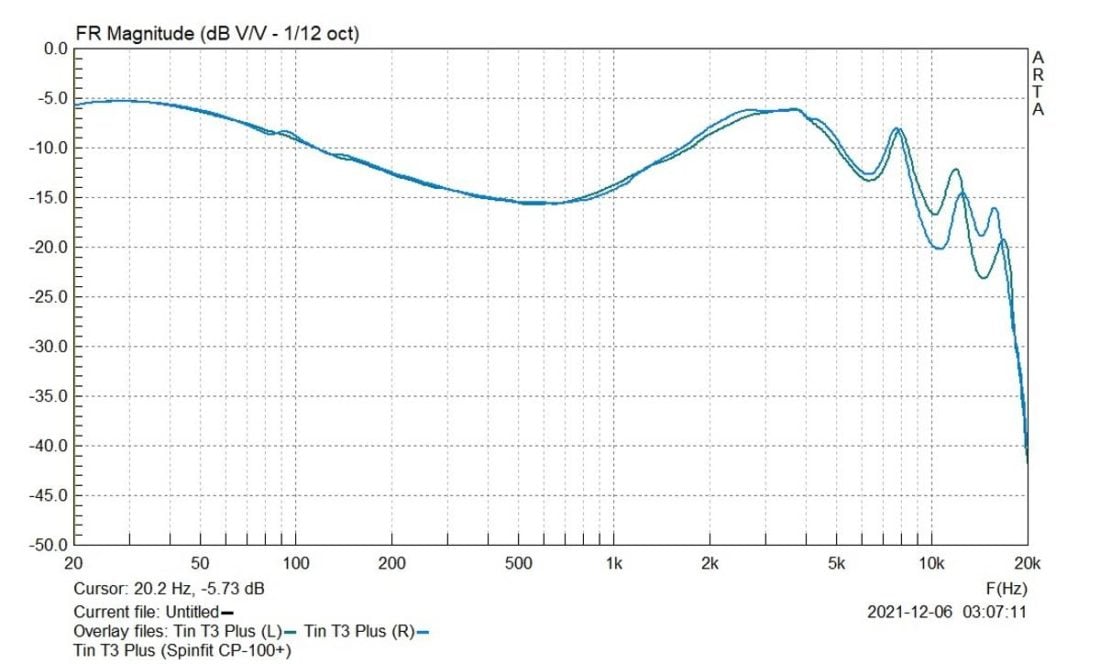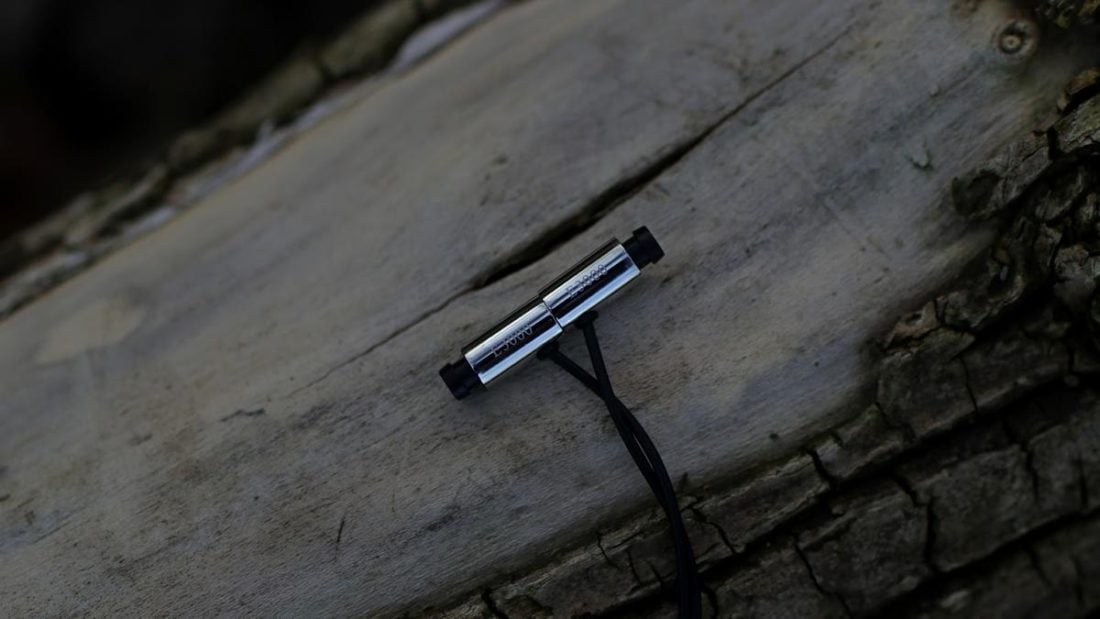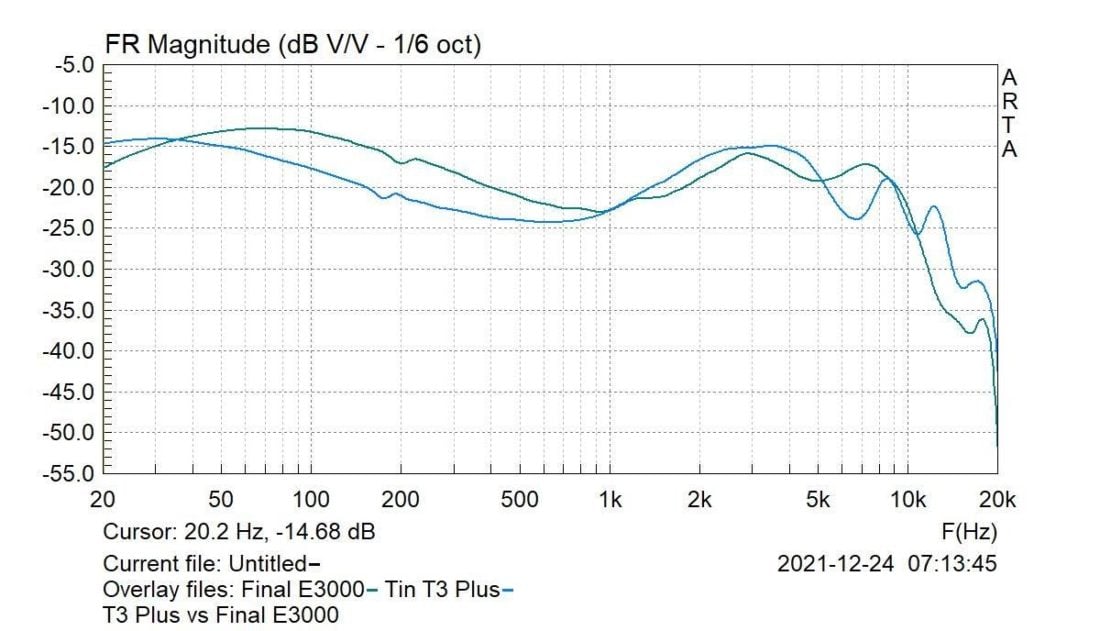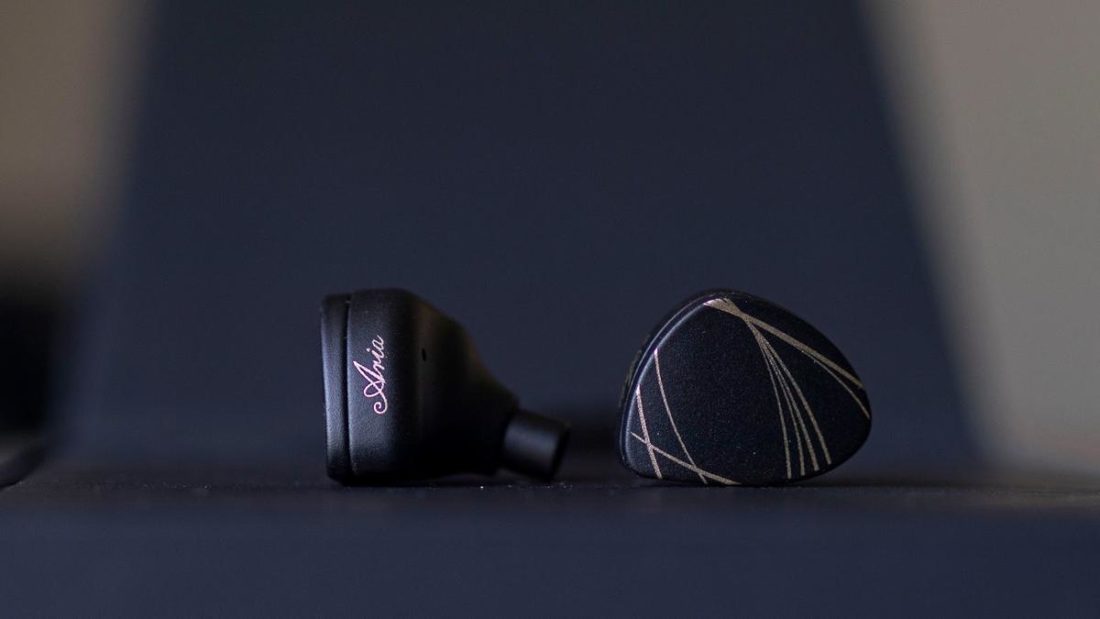TinHiFi became one of the most popular Chinese IEM makers after releasing the TinHiFi T2. These IEMs have something no one else was offering in the budget realm: a well-tuned bright-neutral sound signature. Since then, TinHiFi released several budget models but has not replicated the same level of success enjoyed with the T2. Enter the T3 Plus, (seemingly) an upgrade over the original TinHiFi T3. The latter have metal shells, mmcx ports, and a hybrid driver setup. The former go for resin shells, 2-pin ports, and a single-dynamic driver setup. Aiming to take the budget-IEM crown, let’s see how close TinHiFi got with the T3 Plus.
Technical Specifications
Form: IEM Drivers: 1 x 10mm LCP diaphragm dynamic driver Impedance (Ohm): 32 Ohm Sensitivity (dB): 105dB/mW @ 1kHz Frequency Response (Hz): 10 Hz – 20 kHz Removable Cable: Y Source Jack: 3.5mm Cup/Shell Jack: 0.78mm 2-pin Mic: N
Packaging
The TinHiFi T3 Plus comes in a fairly basic packaging. Removing the outer sleeve and inner packaging, you’ll see the IEMs presented with the cables removed.
In the box
TinHiFi T3 Plus IEMs Cloth carrying pouch A 0.78mm, 2-pin to 3.5mm single-ended cable (Oxygen-Free Copper or OFC) 9 pairs of eartips: 6 pairs of silicone eartips: 3 pairs of white, 3 pairs of black 3 pairs of blue foam tips Warranty card and user manual
Cable
The stock cable has a black 200D Kevlar-infused coating. The cable is supple, doesn’t form kinks, and has good tensile strength. Overall, the supplied cable is better than most of the competition in this price bracket. The chin-slider doesn’t work well, which is the only downside.
Design
The TinHiFi T3 Plus have 3D-printed resin shells with a pseudo-custom shape. There are two vents on the shell: one near the nozzle and another near the side of the IEMs. The nozzle itself is metal. The shells have a translucent black finish, so you can get a glimpse of the golden-colored copper driver cabinet. The resin is high quality and UV-cured, resulting in a smooth finish without imperfections or bubbles. The faceplate design is not particularly eye-catching but looks nice and has depth to it. Unfortunately, the 2-pin connectors are not recessed and sit flush with the housing. This may result in some third-party cables protruding from the housing.
Comfort and isolation
Due to their lightweight nature and ergonomically shaped resin shells, the Tin T3 Plus are very comfortable to wear and they isolate well.
Internals
TinHiFi uses a 10mm LCP (Liquid Crystal Polymer) diaphragm. The diaphragm material is similar to the one Sony uses on their ex-flagship, the Sony EX1000. This particular material has high rigidity, resulting in better pistonic motion and faster transients vs typical PET (plastic, basically) diaphragms. TinHiFi also uses the popular double-cavity design with the driver unit being housed inside a copper capsule. This design allows suppression of resonant frequencies and allows better bass control and extension, dependent upon the volume of the back cavity.
TinHiFi T3 Plus Sound
However, the sound signature is quite tip-dependent. I found the stock tips to be too bassy and they masked the lower-mid details to a degree. Spinfit CP-100+ tips mitigated the issue for the most part.
Bass
TinHiFi usually feels shy about putting much bass emphasis in its earphones, but the T3 Plus is a (rather welcome) departure. The sub-bass is quite prominent and boosted above the lower mids by almost 10dB. The bass frequencies start to rise from 500Hz and peak around 35Hz. You can hear the rumble around 25Hz as well but the impact is lacking. In terms of sheer extension, T3 Plus does the job. When it comes to absolute quality of the bass, I find the mid-bass lacking in texture. The sub-bass does not slam as hard as expected and also casts a halo over the lower-mids. The bass response is not bad per se, but some of the competition does it better.
Midrange
As described before, the lower-midrange can get clouded by the sheer dominance of the sub-bass frequencies. This is most apparent in songs where there is a heavy bass-line that accompanies the male vocals. One such example would be Alter Bridge’s Open Your Eyes. Female vocals fare a lot better. There is no shoutiness or shrillness and even high-pitched vocals sound smooth. String instruments have a thicker note-size and lack crispness which is a byproduct of the tuning itself.
Treble
The treble on the T3 Plus is mostly smooth and only has some emphasis around 4.5kHz and later at around 11kHz (to add some air into the mix). There is a general lack of air and sparkle, mostly due to the sub-bass emphasis and the relatively muted treble tuning. Cymbal hits are placed in the background and they do not resonate for long. Moreover, in fast-paced tracks like Lamb of God’s Ruin cymbal hits tend to smear into each other at times. In fairness, this applies to most budget single-dynamic IEMs so I wouldn’t judge the T3 Plus too harshly for this failure.
Soundstage and imaging
Soundstage width and height is fairly good on the T3 Plus, definitely above average. Soundstage depth falls short against some of their peers, though. Imaging is also average with instruments mostly being placed left and right. You can sense the distance on the X-axis but anything in-between X and Y-axis tends to lose precision.
Dynamics and speed
Some much higher-priced IEMs fall short in this regard, so TinHiFi did a great job with microdynamics. Macrodynamics (the difference between the loudest and softest sound) was lacking, sadly. The lack of sub-bass rumble and mid-bass texture coupled with the rolled-off treble result in fairly compressed macrodynamics. Separation of instruments is good, but not class-leading.
Comparisons
Vs Final E3000
Final E3000 have been on the market for over 4 years now and still remain a benchmark in the budget IEM space. In terms of build, they are the polar opposite to the T3 Plus with a cylindrical shape and fixed cable. In terms of sound quality, the E3000 go for a warm, laid back tuning with mid-bass emphasis. The sub-bass rolls off earlier compared to the T3 Plus, whereas the mid-bass has better texture on the E3000. The treble has slightly better extension and results in superior separation and imaging on the Final IEMs. The E3000 also have class-leading stage width and depth, so the T3 Plus fall short on those aspects. Where the T3 Plus gain the upper-hand are with female vocals as they are more forward and articulate. The bass is also faster on the T3 Plus with less bleeding in the lower-mids. For relaxed, laid-back listening the E3000 are still excellent. If you need extra sub-bass presence and more forward upper-mids, the T3 Plus will serve better.
Vs Moondrop Aria 2021
The Moondrop Aria 2021 have become a benchmark for me in the USD$50-$100 price range. They have an inoffensive tuning with great bass and mids. In terms of build quality, I think it is a toss-up between the two. There are reports of the Aria’s paint chipping off so that is something to note. The stock cable of the T3 Plus is also markedly better. When it comes to sound, they have very similar frequency-response graphs. However, the T3 Plus have some extra energy near 4kHz and add some emphasis to guitar riffs. The Aria sound smoother in the treble region as a result, despite lacking energy and extension. The Aria bass has better mid-bass texture as well, and the sub-bass rumble is more prominent. The T3 Plus are superior at rendering microdynamics and the Aria are better when it comes to macrodynamics. Imaging is a slight improvement on the Aria. Overall, the Aria have slightly smoother tuning with better bass texturing and speed. The T3 Plus do offer a more energetic take on a bass-boosted neutral tuning which suits rock and metal genres.
Where to Buy
Conclusion
TinHiFi has been hard at work to come up with another budget-benchmark, and the T3 Plus is the best attempt yet. The build is solid, accessories mostly good (the tips might require a change), and the sound is closer to the Harman target with some modifications. Unfortunately, apart from microdynamics, the technical performance is only middling. The TinHiFi T3 Plus do not do anything that has not already been done. The pricing is competitive but some lower-priced IEMs come close to the technical performance of the T3 Plus. Tonality is another matter though, and for the most part, TinHiFi nailed it. Female vocals sound excellent and the tuning won’t offend anyone. The TinHiFi T3 Plus are solid IEMs but, by the slightest of margins, they fail to elevate themselves above the competition. A near miss indeed.
